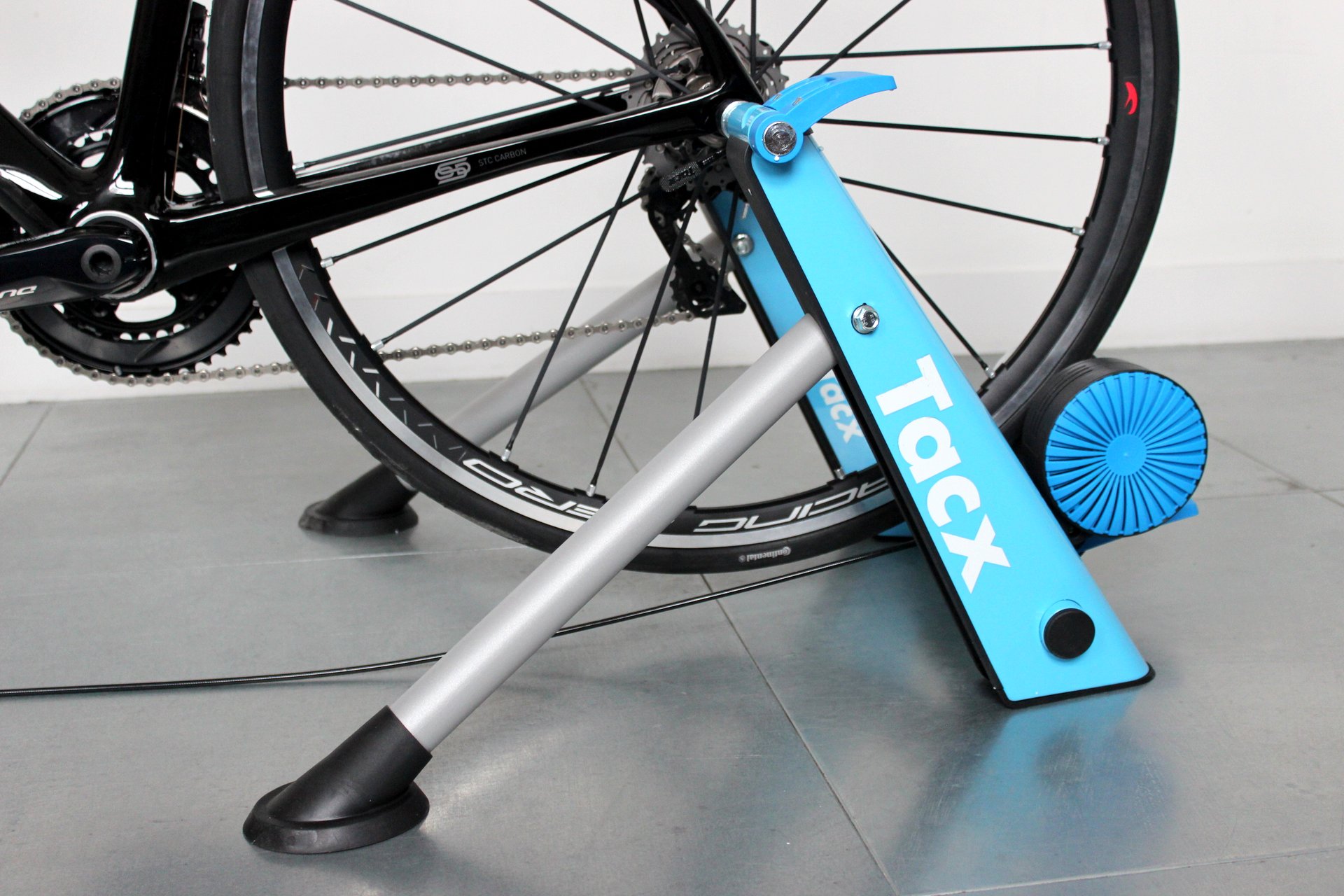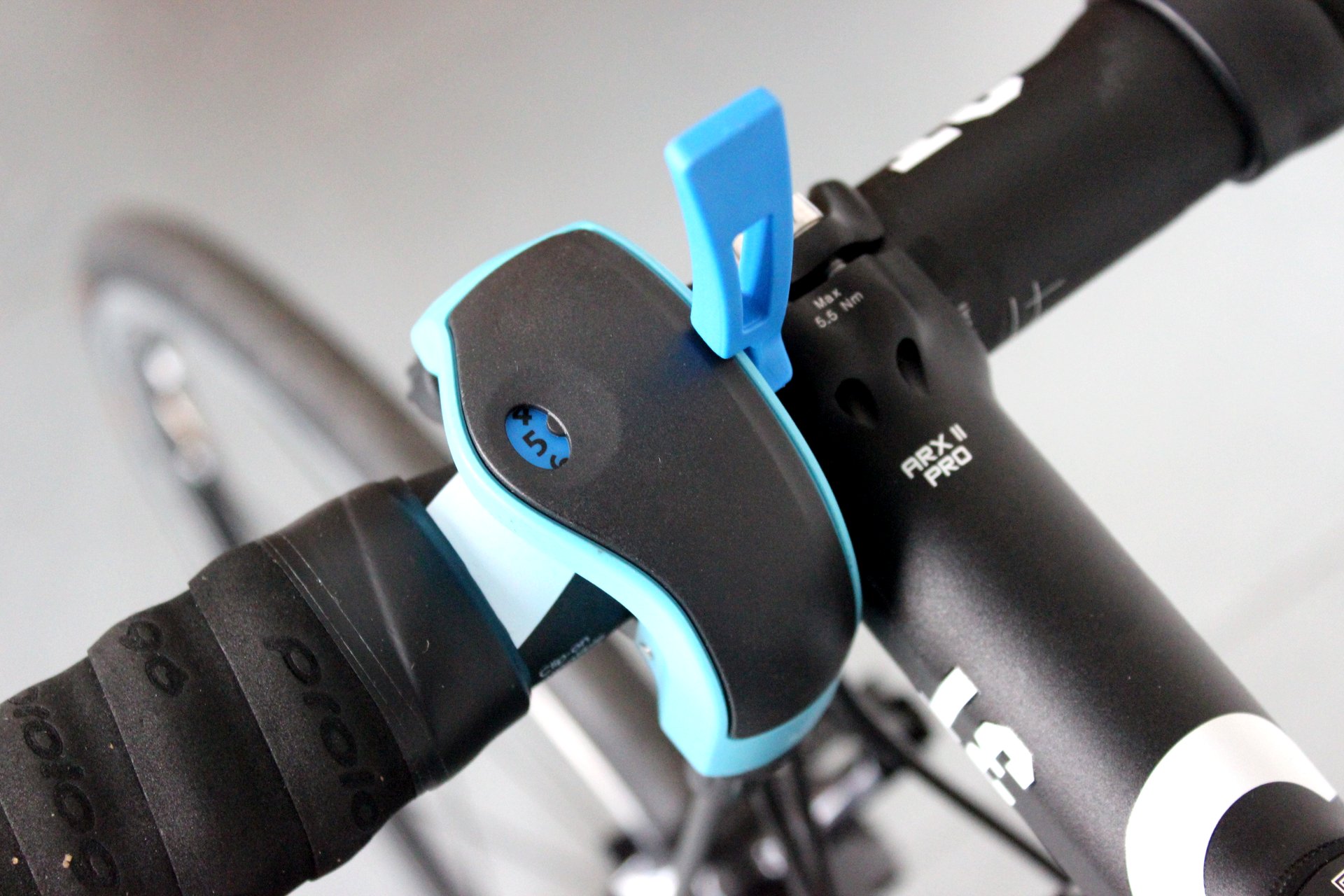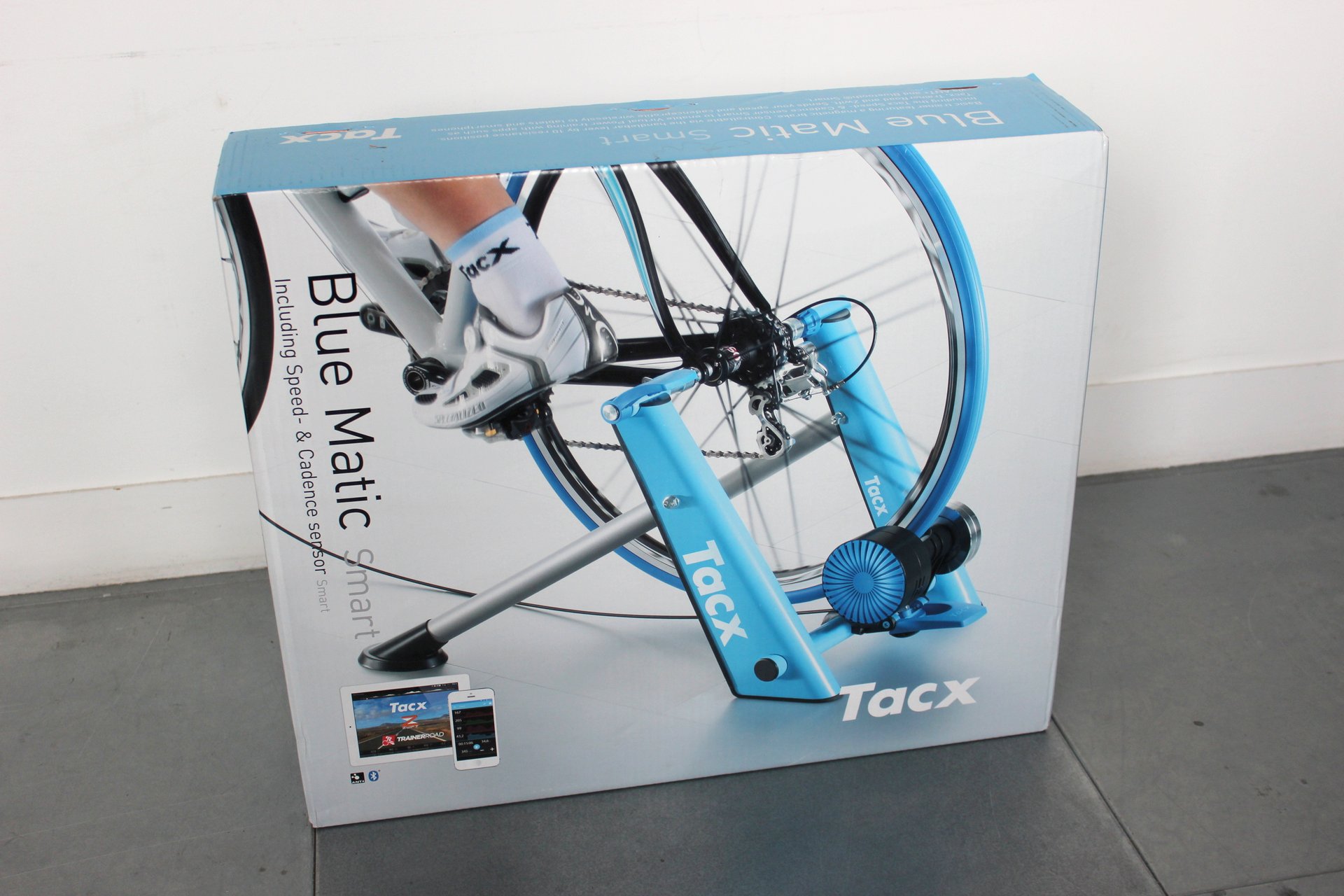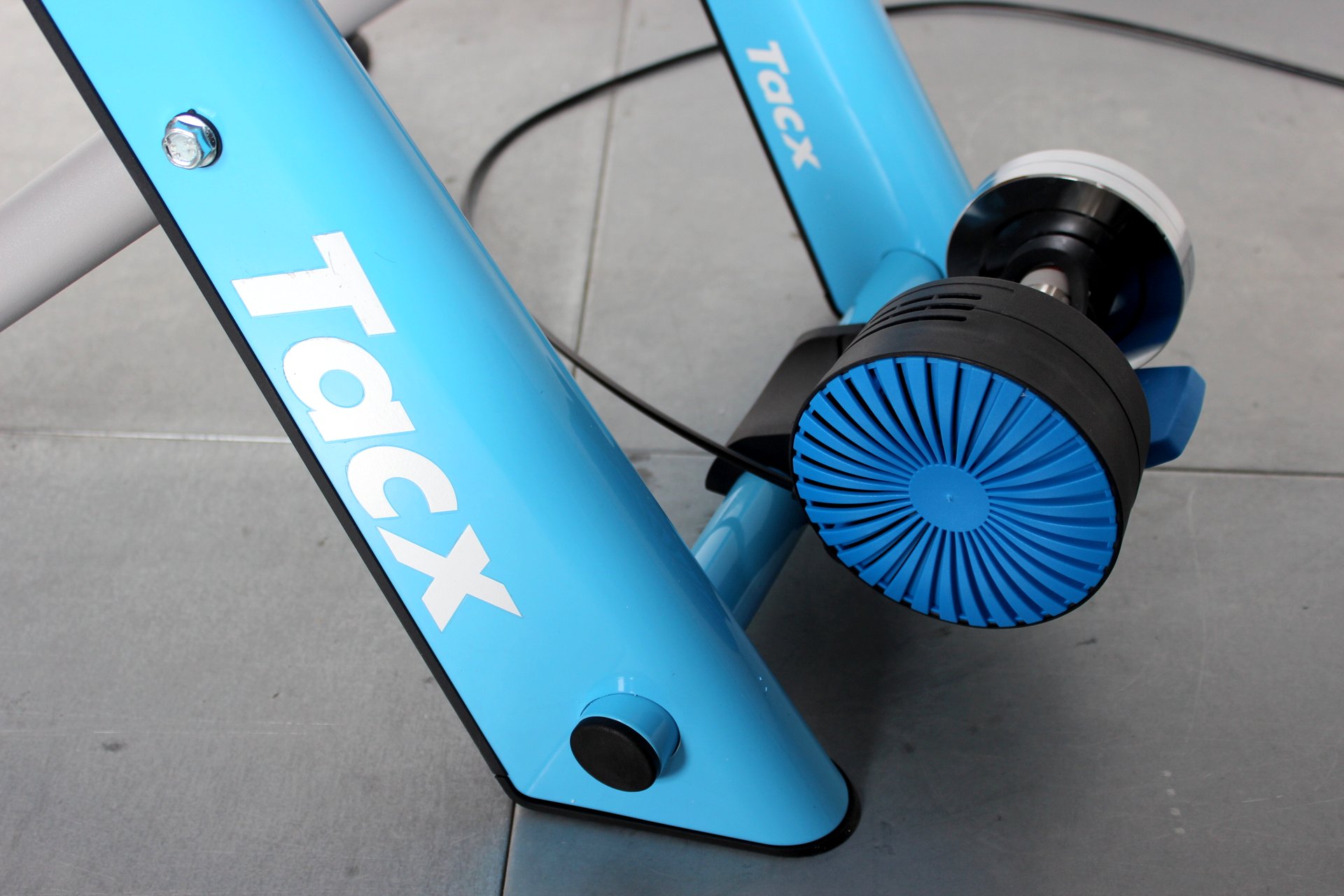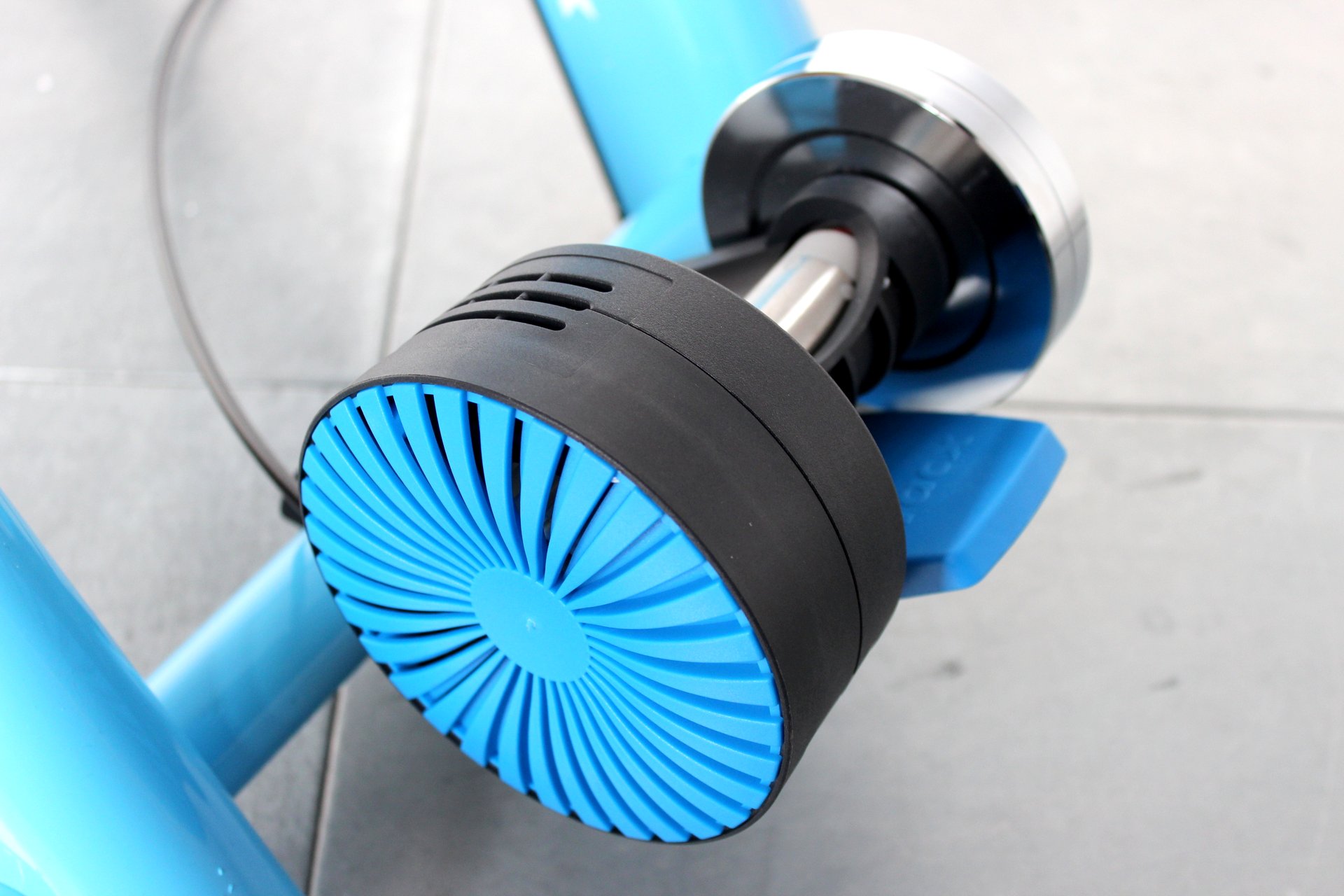All the while the resistance unit is consistent if naturally not as realistic when spinning up as larger and more expensive units might allow – not least because of the lack of neodymium magnets and larger flywheel which you’ll find on the next tier Blue Motion trainer, which in turns bump up the maximum power output to 950w. Indeed, the flywheel effect increases as you move through the range, in order to offer a more realistic feel. Instead, the Blue Matic relies upon ferrite magnets to do the job, with a 1.25kg flywheel (and 8kg flywheel effect) – simple, basic, but nevertheless effective.
At additional cost, Tacx also supply an axle accessory kit, should you be running a disc brake bike, although you should take note that Tacx themselves claim that neither the Focus RAT axles or Cube Attain GTC Pro Disc X12 adaptors will work with the Blue Matic.
Still, overall build quality and sturdiness is excellent, and provides a really stable platform when you’re giving it the beans, holding you firm. Additionally, it folds away into easily stowable dimensions – ideal if you’re short of space, at 25cm in depth – and doesn’t weigh a proverbial ton at 8.4kg.
Conclusion
The Tacx Blue Matic is ideal as a simple turbo trainer – it’s easy to setup and use with consistent resistance and provides a sniff of the smart trainer world without the need to buy a power meter or expensive smart trainer, giving you access to Tacx’s own training software app or the likes of TrainerRoad and Zwift.
That said, it is only a sniff and can’t match a power meter for accuracy, and obviously can’t give you the adaptable sensations of a smart trainer. However, that’s to miss the point on a £134.99 trainer – it’s an excellent, cost-effective unit for those odd days you just can’t get out, or as a pre-race warm-up spinner.
Pros
- Easy to setup and operate
- Provides estimated power from sensors
- Stable under load
- Quiet operation
Cons
- Poor resistance switch
- Not universally compatible
- Power estimation naturally inaccurate
